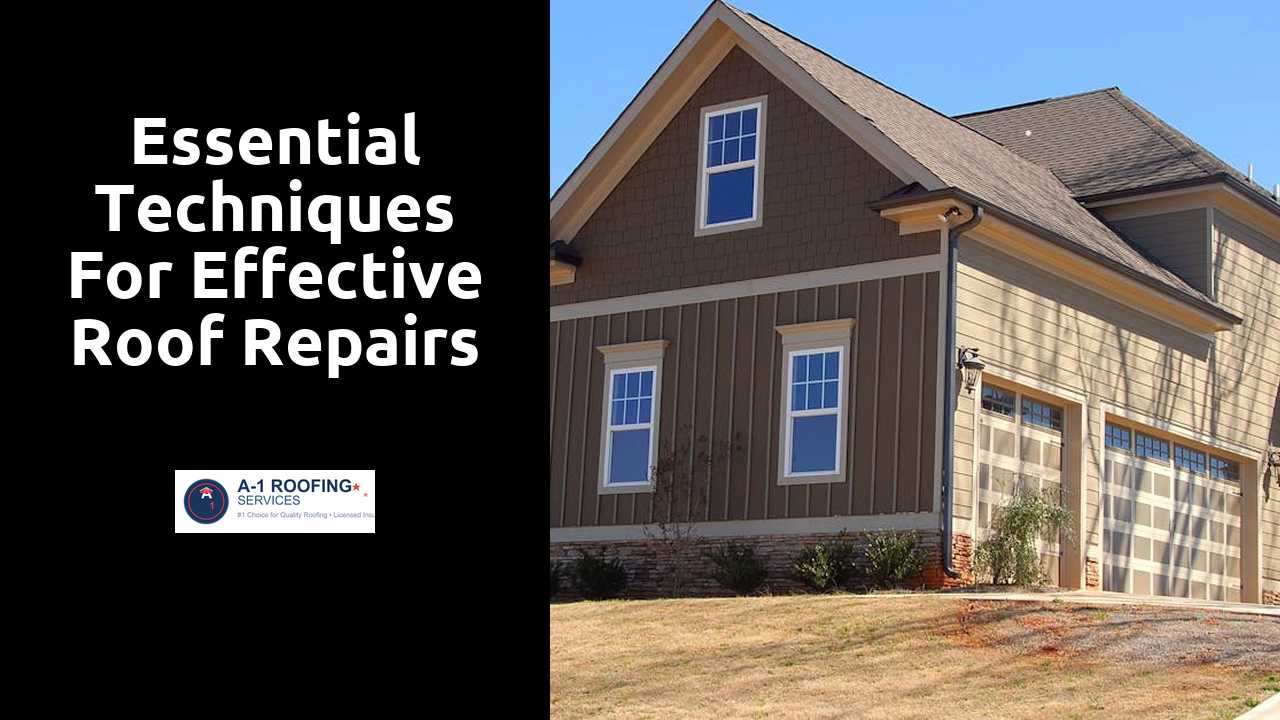
Essential Techniques for Effective Roof Repairs
Table Of Contents
Repairing Leaks Effectively
Identifying the source of a leak is crucial to effective repair. Begin by inspecting the roof for visible signs of damage, such as cracked shingles or rusted flashing. Pay attention to areas where different roof sections meet, as these locations are often vulnerable to leaks. If water stains are present on the ceiling or walls inside the home, track them back to their origin. Using a hose can help simulate rain and pinpoint the leak's exact location.
Once the leak is identified, gather the necessary tools and materials for repair. Depending on the severity of the damage, simple solutions may include applying roofing sealant over cracks or gaps. For more extensive issues, replacing damaged shingles or sections of flashing might be required. It's essential to work carefully, ensuring that all edges are sealed properly to prevent future leaks. Taking the time to execute these repairs correctly will provide long-term protection for the home's interior.
Get more info by visiting this post.
Step-by-Step Leak Repair Process
Identifying the source of a leak is crucial before any repairs can be made. Start by inspecting the interior of your home for signs of water damage, such as stains or mold. An exterior examination of the roof can reveal missing shingles or damaged flashing. Be sure to check areas around chimney stacks and roof vents, as these are common points of failure. It may also help to conduct a water test by spraying water on different sections of the roof while a helper observes the interior for signs of dripping.
Once the source is located, clear the area of debris to ensure a smooth working surface. If the leak is due to damaged shingles, carefully pry up the affected ones using a flat bar. For a complete repair, replace each damaged shingle with a new one, securing it with roofing nails. In the case of issues with flashing, remove the compromised sections and replace them with durable materials, sealing the edges with roofing cement. Always double-check your work to confirm there are no additional leaks before considering the task complete.
Shingle Repair Techniques
Shingle repair is essential for maintaining the integrity of a roof. When faced with damaged or missing shingles, homeowners need to act quickly to prevent further issues. The first step is to identify the problem area. A thorough inspection should reveal any broken, cracked, or completely missing shingles that could allow water to seep into the underlying structure. If damage is minimal, the repair may simply involve applying roof cement to seal small cracks.
In cases where shingles are significantly damaged, replacing them is often the best option. Carefully lift the surrounding shingles to access nails holding the damaged piece in place. Remove any old shingles and clean the area to ensure proper adhesion of the new shingles. When installing replacements, align them with existing shingles to maintain a consistent roof appearance. Not only does this method provide a secure fit, it also enhances the overall durability of the roofing system.
Replacing Damaged or Missing Shingles
When shingles become damaged or go missing due to weather conditions or wear over time, it's essential to address the issue promptly to prevent further damage to the roof. To start, inspect the affected area and remove any debris or loose material. Carefully lift the shingle, if still partially attached, and remove any nails holding it in place. For missing shingles, measure the area to determine the correct size for replacement and purchase shingles that match the existing ones in color and style.
Next, position the new shingle in place, ensuring it aligns with neighboring shingles. Secure it using a hammer and nails, placing them in the designated zones to avoid potential leaks. For added protection, apply roofing adhesive beneath the shingle’s tabs. This process increases the bond and helps prevent future movement or leaks. Finally, check the surrounding shingles to ensure they are intact and re-nail any that are loose, providing a cohesive seal across the roof.
Working with Flashing
Flashing plays a crucial role in preventing water infiltration at the joints and seams of a roof. This metal material directs water away from vulnerable areas, such as chimneys, vents, and skylights. Over time, flashing can corrode or become damaged due to weather exposure, which may lead to leaks if not addressed promptly. Regular inspections can help identify wear and tear, ensuring that any necessary repairs or replacements are made before significant damage occurs.
When it comes to repairing or replacing flashing, assessing the extent of the damage is essential. Minor issues, such as loose or curled edges, can often be rectified with sealant or adhesive. For more extensive damage, removing the affected section may be necessary. This process typically involves prying up shingles or other materials surrounding the flashing. Once the damaged piece is removed, installing a new section requires careful alignment to ensure it directs water properly. Proper fastening and sealing with roofing cement will enhance its longevity and effectiveness.
Repairing and Replacing Flashing
Properly functioning flashing is essential for preventing water intrusion in vulnerable areas around chimneys, vents, and roof valleys. When it becomes damaged or corroded, the risk of leaks increases significantly. Inspecting the flashing for rust, cracks, or gaps should be part of routine roof maintenance. If any issues are detected, prompt action is required to ensure long-term protection against water damage.
When replacing flashing, begin by removing the old material carefully to avoid damaging surrounding shingles or roofing materials. Clean the area thoroughly to ensure a proper seal for the new flashing. For metal flashing, use a durable material that matches your existing roof profile. Secure it tightly, taking care to apply roofing sealant to the edges for enhanced weather resistance. Once installed, inspect it regularly, especially after heavy rains, to ensure that it remains intact.
Related Links
Identifying Common Roof Issues and Their SolutionsSeasonal Considerations for Effective Roof Repair